The Kalasha are a discrete race of people with their own unique religion, customs and culture. Unlike other minority groups in Pakistan, they are specifically located in the three isolated narrow valleys of Birir, Bomburet and Rumbur in the south-west of the Chitral District of the North West Frontier Province. The Kalasha are thought to be the last survivors of the people of Kafiristan - a reference by the Muslim peoples as "The Land of Infidels" which once extended through the Hindu Kush Mountain range from eastern Afghanistan to parts of the Chitral area. The Afghanistan areas of Kafiristan were forcibly converted to Islam in the late 19th century, which co-incidentally then became known as Nooristan or "The Land of Light". The Kalasha, most probably because of their extreme isolation, extraordinarily managed to retain their culture and customs and still do today, despite being located within a devoutly Muslim country.
Currently it is estimated that there are some 4,000 Kalasha people residing in the three valleys. The population however is thought to be declining and the older Kalasha are alarmed at the number of young people converting to Islam. Data reveal that to date some 3,000 Kalasha people have converted to Islam. A leader of the Kalash, Saifulla Jan has announced "If any Kalasha converts to Islam, they cannot live among us any more. We (must) keep our identity strong". Although the Pakistani Government has openly committed itself to the preservation of the Kalasha, the local people are concerned about what they see as the forced erosion by neighbouring Muslims of their traditions, customs and culture.
The Kalasha people certainly do not look Pakistani in appearance, although there is a huge variation in skin type, eye and and hair colour. Some are fair skinned and red haired with blue or piercing green eyes, others are dark with brown eyes. Legend has it that Kalasha are the descendants of the armies of Alexander the Great following his massive campaigns through the area but all genetic evidence now suggests that this theory is more romantic than real. Origins of the Kalasha people are now thought to be most probably Indo-Iranian with their customs more akin to those of pre-Zoroastrian traditions. Their language too is Dardic - or that pertaining to a group of languages derived from the Indo-European family - but with some strong Iranian characteristics. Interestingly, Kalasha is considered to be an independent language in its own right.
The Kalasha, although often referred to as "a pagan people" (which may refer to non-Christian peoples but has connotations of heathenism or even animalism), are in fact deeply religious. They are a polytheistic people who believe in a supreme god Dezau (Pashto: Khodai) as well as worshipping several divines who deal with more earthly matters. Their religion also allows for a certain amount of mysticism, there being a general belief in "Mountain Fairies" who help the people in hunting and killing enemies. It is believed that the Mountain Fairies live in high mountains such as Tirich Mir and descend in late autumn to the lower mountain meadows.
Religious life is informally conveyed and plays mainly a ceremonial role during the many Kalasha festivals. Customs, communal rituals and festivals play a defining role in daily Kalasha life. There are more than 30 full community festivals throughout the year, in addition to the many annual clan and family feasts and ritual celebrations that accompany marriages, births, deaths and other family matters and which may involve the whole community. The festivities tend to decline in summer when the men tend flocks in the upper pastures and arduous agricultural work occupies the women.
The Kalasha, probably for survival reasons, have strong values of collectivism of clan and community. Social and religious activities take place at the level of the entire community and rarely take place at the level of an individual family. .
The Kalasha certainly know how to enjoy themselves and wine is part of their frequent festivities. In her fascinating insight into the culture and customs of the Kalasha people Japanese author Akiko Wada in her book "Kalasha - Their Life and Tradition" eloquently summarises the Kalasha way of life: "The Kalasha people are known for their friendliness, and for the good time they have. Their life is organised around a continuous parade of communal religious celebrations, which are usually mixtures of religious rites, dancing, singing, wine, food and general revelry. If it isn't a formal festival, it is a clan event or a special celebration of this or that. In the harsh environment the Kalasha life is not easy. However, socially and culturally it is a very rich and lively life."
The concepts of "pure" (onjeshta) and "impure" (pragata) play a strong role in the religion and day to day life of the Kalasha. Objects, both animate and inanimate, bear different degrees of purity. For example, men, water, goats, wheat, wine are considered pure at most times, whereas women, Muslims, chickens and eggs are impure. Most are somewhere in between. Much attention is given to ensuring the purity of Kalasha life, the basic religious concept being that Dezau and the divines will not accept prayers if a state of purity is not maintained.
The states of purity affecting women are particularly tough. A woman during childbirth or menstruation is so impure that she is sent away from the village to a special house known as "Bashali". Even the newborn child is considered impure and a ritual restoring purity to a woman after childbirth must be performed before she and her child can return to her husband in the village. Fortunately for the women, the Bashali is being replaced by Mother and Child Health Centres.
On the other hand, the Kalasha people are by European standards, remarkably open minded. Boys and girls are not segregated and contact between the sexes is widely accepted. Marriage is often by elopement which may involve women who are already married. Interestingly, elopement is considered as one of the Kalasha "great customs". Polygamy is rare but tolerated.
Girls are usually married at a young age. The bride does not immediately move into her husband's family home and may move back and forth from her family home for some years before settling permanently with her husband. Customs dictate that a bride and groom must not be closely related but with the dwindling population, this is becoming extremely difficult.
The Kalasha are largely subsistence farmers and shepherds. The basic crops are maize, wheat millet, lentils and beans. With the exception of tomatoes, potatoes and pumpkins, vegetables are rarely eaten or grown in Kalasha gardens. Fruits are plentiful and include mulberries, walnuts, apricots, apples and grapes. Goats and cows provide daily sustenance and fibre for clothing and carrying bags.
Kalasha village houses are made from wood, stone and mud and are generally grouped against the steep valley walls, often with one house providing the base for another house built on top. They are mostly basic one-room affairs comprising a stove and sitting area, with beds lined around the walls.
Traditions for the Kalasha people still remain strong and all women wear the traditional black heavily embroidered robes and elaborate "Shashut" head dress. The women braid their long hair and wear a distinctive single plait on the centre of their foreheads.
The sadness for the Kalasha people is their probable demise as a discrete race. To visit the Kalasha Valleys whilst the people still hold on to a semblance of their proud culture and traditions is indeed a wonderful privilege and one that we will hold very dearly to our hearts.
Note: More detailed information about the Kalasha people can be found in the publications of: "Kalash - The Paradise Lost, M Alauddin, 2006, Ushba Publishing International, Karachi, Pakistan and "Kalasha - Their Life and Tradition", Akiko Wada, Sang-E-Meel Publications 2005, Lahore, Pakistan*.
*This beautifully presented book was sent to us in Australia as a gift from Mr Ishaq Ali, North Pakistan Adventure
Special thanks are extended to Mr Ishaq Ali and Mr Sadruddin Ali, North Pakistan Adventure Travel Agents for their wonderful photos that they so generously allowed me to use in this section of my travelogue.
Insight into the Life of the Lost Kalasha People
Friday, May 06, 2011
 Buni, North West Frontier Province, Pakistan
Buni, North West Frontier Province, Pakistan
Other Entries
-
13To Khorramabad: Connecting With the Archaemenids
Apr 2115 days prior Khorramabad, Iranphoto_camera11videocam 0comment 0
Khorramabad, Iranphoto_camera11videocam 0comment 0 -
14"If You Were Israeli - I Cut Your Throat!"
Apr 2214 days prior Ahvaz, Iranphoto_camera7videocam 0comment 0
Ahvaz, Iranphoto_camera7videocam 0comment 0 -
15Iran-Iraq War Martyrs: Flying the Fallen
Apr 2313 days prior Shiraz, Iranphoto_camera8videocam 0comment 0
Shiraz, Iranphoto_camera8videocam 0comment 0 -
16Perceptions of Persepolis: Grandeur of the Ruins
Apr 2412 days prior Shiraz, Iranphoto_camera8videocam 0comment 0
Shiraz, Iranphoto_camera8videocam 0comment 0 -
17Photo Gallery of Persepolis and Naqsh-E Rostam
Apr 2412 days prior Shiraz, Iranphoto_camera16videocam 0comment 0
Shiraz, Iranphoto_camera16videocam 0comment 0 -
18Today: The First Day of the Remainder of Your Life
Apr 2511 days prior Kerman, Iranphoto_camera16videocam 0comment 0
Kerman, Iranphoto_camera16videocam 0comment 0 -
19Yazd - Such a Lovely Place, Such a Lovely Place...
Apr 279 days prior Yazd, Iranphoto_camera14videocam 0comment 0
Yazd, Iranphoto_camera14videocam 0comment 0 -
20Toward Esfahan - "The Jewel of Ancient Persia"
Apr 288 days prior Esfahan, Iranphoto_camera34videocam 0comment 0
Esfahan, Iranphoto_camera34videocam 0comment 0 -
21A Gorgeous Carpet, Jolfa and Fascinating Abyaneh
Apr 306 days prior Abyaneh, Iranphoto_camera9videocam 0comment 0
Abyaneh, Iranphoto_camera9videocam 0comment 0 -
22Photo Gallery of Abyaneh Village
Apr 306 days prior Abyaneh, Iranphoto_camera13videocam 0comment 0
Abyaneh, Iranphoto_camera13videocam 0comment 0 -
23Destination Tehran - Reflections on our Travels
May 015 days prior Tehran, Iranphoto_camera13videocam 0comment 0
Tehran, Iranphoto_camera13videocam 0comment 0 -
24Osama bin Laden Dead - Our Travel Plans in Chaos
May 024 days prior Dubai, United Arab Emirates, United Arab Emiratesphoto_camera11videocam 0comment 0
Dubai, United Arab Emirates, United Arab Emiratesphoto_camera11videocam 0comment 0 -
25For Better or For Worse - We Head off to Islamabad
May 033 days prior Islamabad, Pakistanphoto_camera4videocam 0comment 0
Islamabad, Pakistanphoto_camera4videocam 0comment 0 -
26Eclectic Chitral - North West Frontier Province
May 042 days prior Chitral, Pakistanphoto_camera14videocam 0comment 0
Chitral, Pakistanphoto_camera14videocam 0comment 0 -
27The Wonderful Faces of Chitral Town
May 042 days prior Chitral, Pakistanphoto_camera8videocam 0comment 0
Chitral, Pakistanphoto_camera8videocam 0comment 0 -
28A Four-Seater Jeep, Six People & Two Kalashnikovs
May 051 day prior Bomburet, Pakistanphoto_camera15videocam 0comment 1
Bomburet, Pakistanphoto_camera15videocam 0comment 1 -
29Love Affair with Rumbur, A Sick Jeep Trip to Buni
May 06earlier that day Buni, Pakistanphoto_camera9videocam 0comment 0
Buni, Pakistanphoto_camera9videocam 0comment 0 -
30Insight into the Life of the Lost Kalasha People
May 06 Buni, Pakistanphoto_camera8videocam 0comment 3
Buni, Pakistanphoto_camera8videocam 0comment 3 -
31More Photos of the Kalasha Peoples
May 06later that day Buni, Pakistanphoto_camera14videocam 0comment 0
Buni, Pakistanphoto_camera14videocam 0comment 0 -
32Tandoori Chicken, Potatoes & Eggs at Shandur Pass
May 071 day later Gupis, Pakistanphoto_camera23videocam 0comment 0
Gupis, Pakistanphoto_camera23videocam 0comment 0 -
33You Want More.....? Are You Sure.....?
May 082 days later Gilgit, Pakistanphoto_camera14videocam 0comment 1
Gilgit, Pakistanphoto_camera14videocam 0comment 1 -
34Heaven on Earth at Eagle's Nest Hotel, Duikar
May 093 days later Duikar, Pakistanphoto_camera19videocam 0comment 1
Duikar, Pakistanphoto_camera19videocam 0comment 1 -
35The Solitude of a Dawn in Duikar
May 104 days later Karimabad, Pakistanphoto_camera10videocam 0comment 3
Karimabad, Pakistanphoto_camera10videocam 0comment 3 -
36Photo Gallery of Karimabad and the Hunza Area
May 104 days later Karimabad, Pakistanphoto_camera22videocam 0comment 2
Karimabad, Pakistanphoto_camera22videocam 0comment 2 -
37Our Man From Waziristan or "Titanic!"
May 115 days later Sost, Pakistanphoto_camera20videocam 0comment 0
Sost, Pakistanphoto_camera20videocam 0comment 0 -
38A Public Bus Over the Khunjerab Pass Into China
May 115 days later Khunjerab Pass, Pakistanphoto_camera21videocam 0comment 0
Khunjerab Pass, Pakistanphoto_camera21videocam 0comment 0 -
39Our Top Tips for Crossing the Khunjerab Pass
May 126 days later Khunjerab Pass, Chinaphoto_camera2videocam 0comment 0
Khunjerab Pass, Chinaphoto_camera2videocam 0comment 0 -
40At Home in Lovely Tashkorgan - We Find Hunza Man
May 137 days later Tashkorgan, Chinaphoto_camera12videocam 0comment 0
Tashkorgan, Chinaphoto_camera12videocam 0comment 0 -
41Two Taxis and a Slow Trip to Kashgar
May 148 days later Kashgar, Chinaphoto_camera10videocam 0comment 0
Kashgar, Chinaphoto_camera10videocam 0comment 0 -
42Evocative Old Kashgar
May 159 days later Kashgar, Chinaphoto_camera8videocam 0comment 0
Kashgar, Chinaphoto_camera8videocam 0comment 0 -
43Photo Gallery of Kashgar
May 159 days later Yarkand, Chinaphoto_camera18videocam 0comment 0
Yarkand, Chinaphoto_camera18videocam 0comment 0 -
44Southern Silk Road - Tracking the Taklamakan
May 1610 days later Keriya (Yutian) , Chinaphoto_camera16videocam 0comment 0
Keriya (Yutian) , Chinaphoto_camera16videocam 0comment 0 -
45Tazhong - Drawing Chickens in the Taklamakan
May 1711 days later Tazhong, Chinaphoto_camera23videocam 0comment 0
Tazhong, Chinaphoto_camera23videocam 0comment 0 -
46Desert Devils of the Taklamakan
May 1812 days later Korla (Bayingol), Chinaphoto_camera11videocam 0comment 0
Korla (Bayingol), Chinaphoto_camera11videocam 0comment 0 -
47Toward Urumqi - Siamese Mountains and Wind Farms
May 1913 days later Urumqi, Chinaphoto_camera3videocam 0comment 0
Urumqi, Chinaphoto_camera3videocam 0comment 0 -
48A Day in Urumqi and The Fabulous Erdaoqiao Markets
May 2014 days later Urumqi, Chinaphoto_camera6videocam 0comment 0
Urumqi, Chinaphoto_camera6videocam 0comment 0
Comments
2025-05-22
Comment code: Ask author if the code is blank

 Buni, North West Frontier Province, Pakistan
Buni, North West Frontier Province, Pakistan
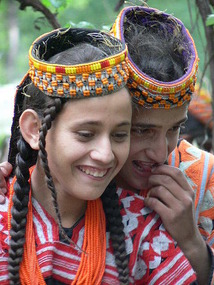
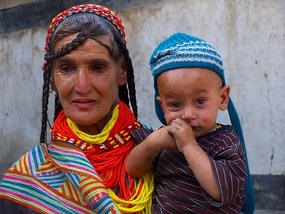
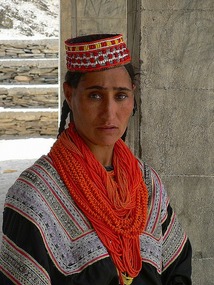
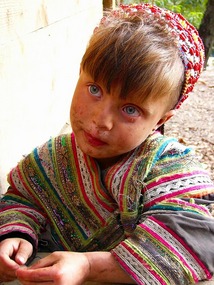
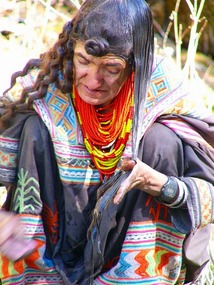
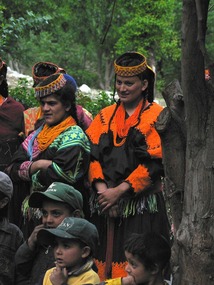
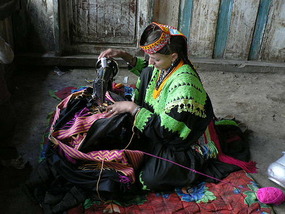




londone7
2012-01-09
this was really interesting to see and hear about the many local cultures. i'm sure most people (even in pakistan) dont even know of their existence
Ebony A
2012-06-15
I just wanted to say thank you. I had chosen the Kalash for an paper for school and I found the information here very helpful. I did cite this as a source. It was a very interesting read and I have enjoyed learning about the Kalash.
crowdywendy
2012-06-15
Hi Ebony. Thank you very much for your feedback. I hope one day too you will be able to visit the Kalasha Valleys and their fascinating people. Good luck with your school work!